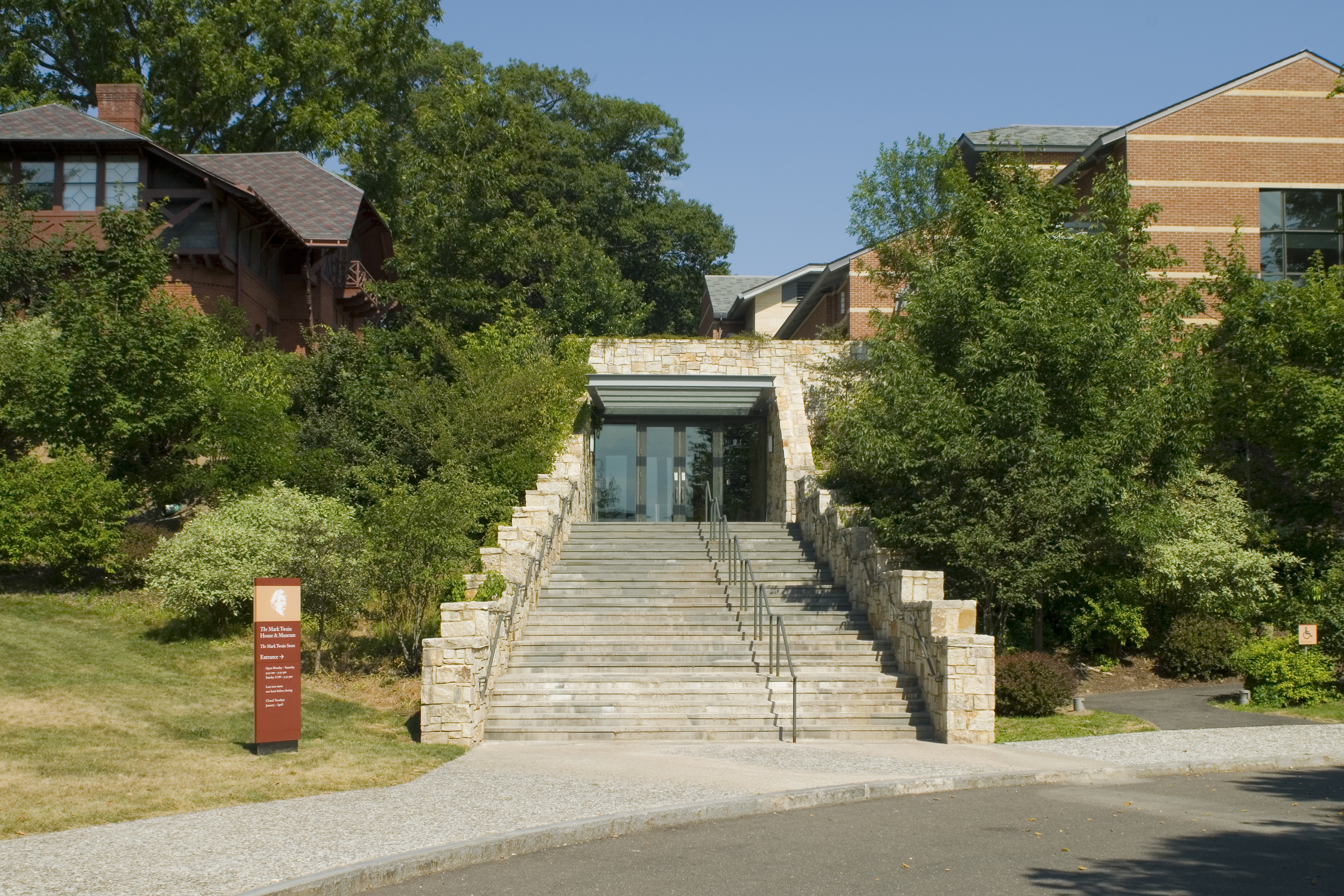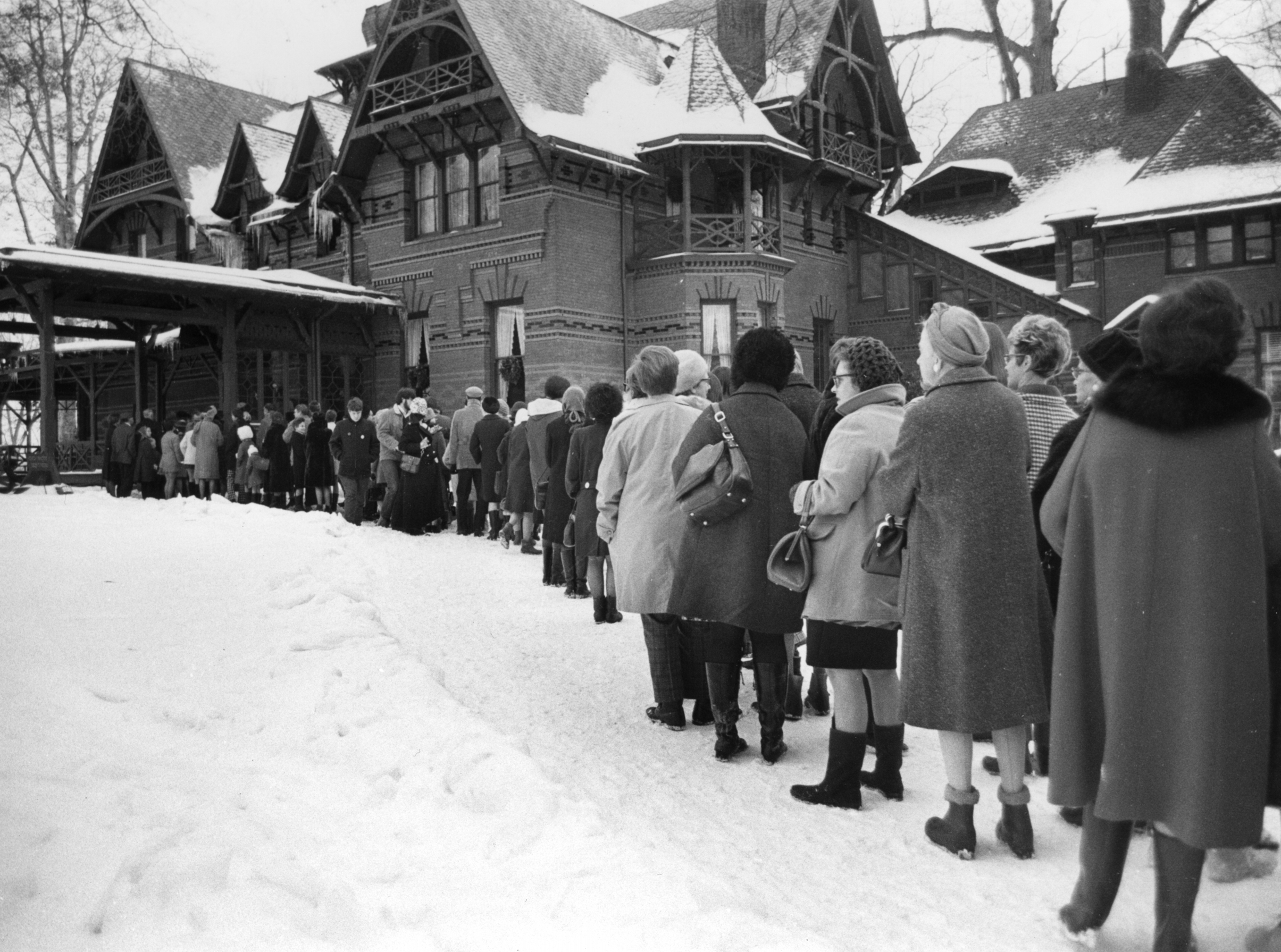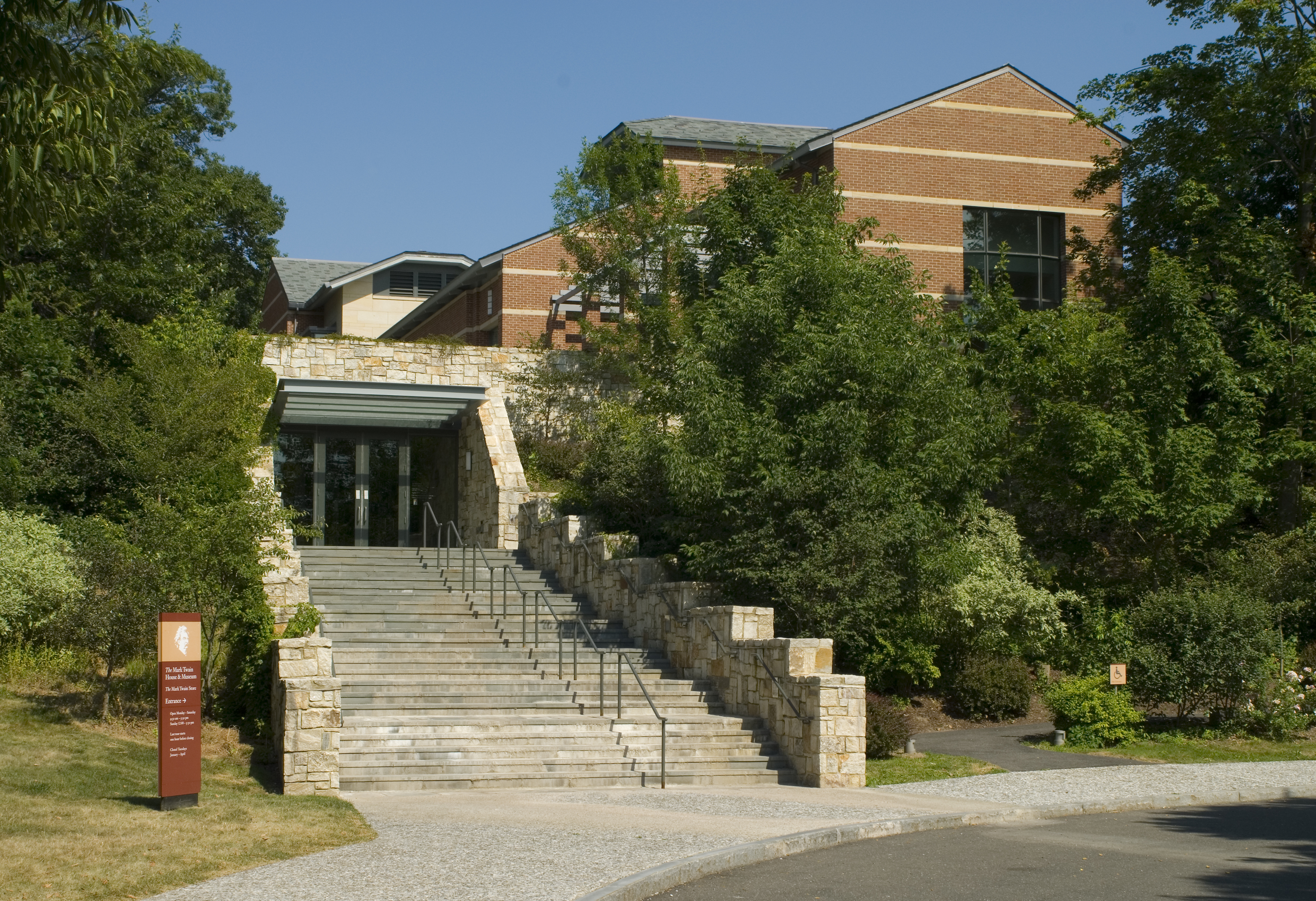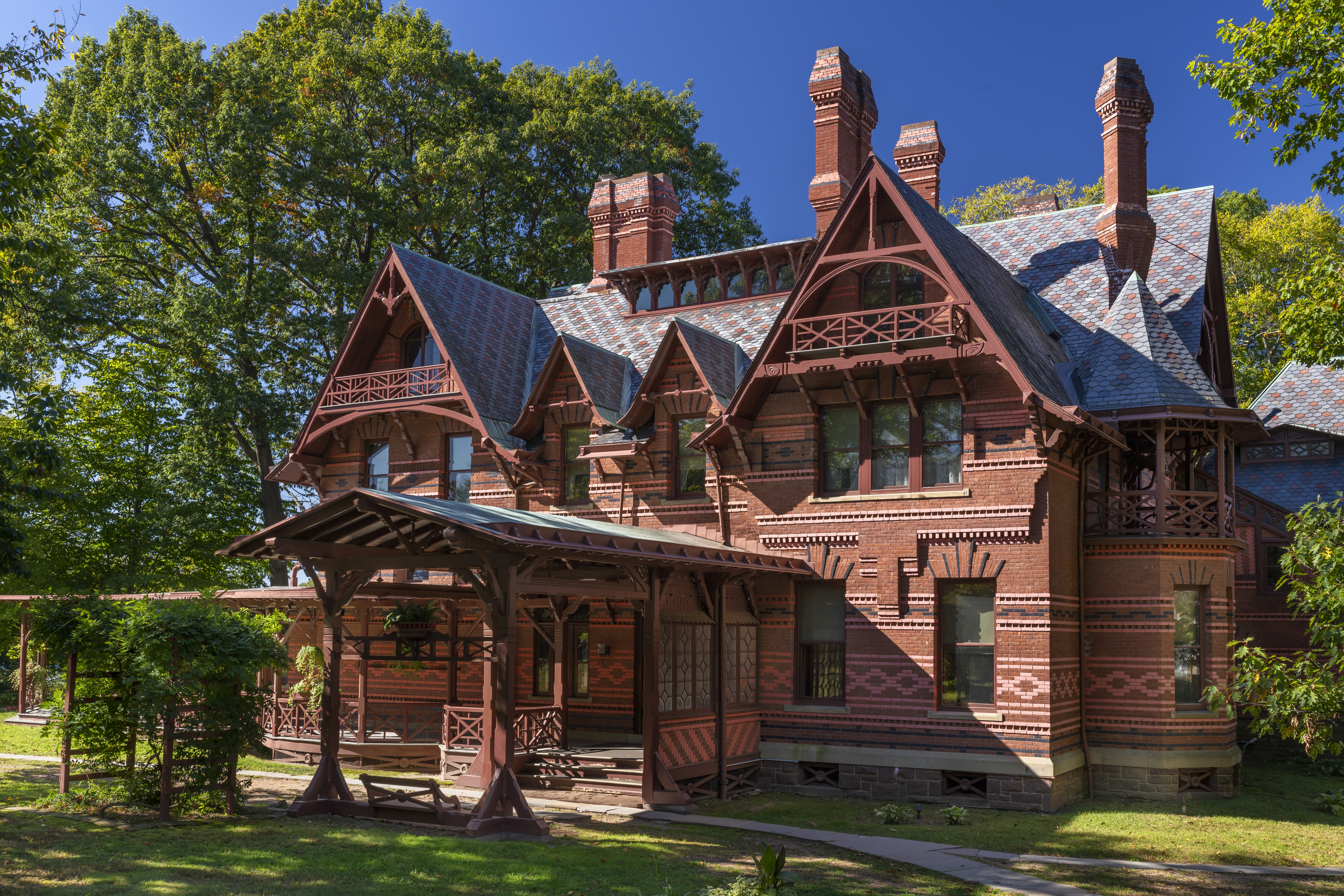Museum Era
Formal restoration of the house began in 1963, the same year the Mark Twain House was designated a National Historic Landmark. The work began with the third floor Billiards Room. Research, physical investigation, and restoration of the rest of the house continued, and all the major rooms of the home were opened in time for the celebration of the 100th anniversary of the house in 1974.
1974 Museum Opening
After 45 years of fundraising, 19 years of restoration, and 100 years after its initial construction, the Mark Twain Memorial opened its doors as a museum in September 1974. At that time you entered through the basement of the house where the gift shop and ticket desk were located. The kitchen wing was staff offices, and a number of the unrestored rooms were used as collections storage. In 1974, Wilson Faude was the curator of the museum and oversaw years of research, tedious re-stenciling, and the acquisition of objects and furniture belonging to the Clemens family. In an article about the opening celebrations, Faude is quoted as saying, “about 14 percent of the furnishings belonged to Twain and the family. The rest was donated by citizens after rigid documentation for historical validity.”
Friends of the Mark Twain House
Fran Gordon met with 32 women on September 25, 1967 to formally organize what is now the Friends of the Mark Twain House & Museum. The group evolved after the president of the Board of Trustees added women to its membership in 1954. They were responsible for caring for museum collections, library cataloging and research, and giving tours of the house.
The Friends began fundraising in 1954 when they assisted with the celebration of Twain’s birthday with the reading of his works by Governor Lodge. As their numbers grew, so did the events they developed and sponsored. The yearly financial contribution to the Mark Twain House began with a donation of $1,366 in 1970 after a fashion show. In 1975 member trips to locations Mark Twain wrote about became another source of revenue, and by 1976 the group’s contributions exceeded $19,000.
The annual Holiday House Tour began in 1979 and continues to be an annual fundraising event. Private homes, the Mark Twain House, and sometimes public buildings are included in the tour.
In 1995 Kay Hoffman and Marty Flanders organized an event that for many years functioned as a gala fundraiser for the Museum. It raised $40,000 that year. From 1999 through 2002 the Galas continued to raise over $100,000 annually for the operating expenses of the Mark Twain House.
When the Visitors and Education Center for the Mark Twain Housewas announced, the Friends contributed $30,000 to the capital campaign fund. It is astonishing to realize that since 1967 the Friends, in their fundraising efforts with the Holiday Galas and Holiday House Tours, have contributed more than $1,000,000 to the operating funds of The Mark Twain House. The Mark Twain House Friends group officially disbanded in 2022.
2003 Visitor Center Opening
In 1999, the museum began a capital campaign to grow the campus. By the early-2000s the Mark Twain House’s staff, visitation, and collection had outgrown the two historic buildings (the house itself and the adjacent carriage house) and the organization had been renamed The Mark Twain House & Museum.
Thus the institution hired architect Robert A.M. Sterns to design and build a museum center. The resulting 35,000-square-foot building was built into the hillside so it wouldn’t overshadow the historic structures, but would provide space for administrative use, retail, education, exhibitions, and collections storage. Then Executive Director John Boyer is quoted as saying “He [Twain] is constantly and continually percolating through popular culture. He’s out there. He is being read in the classrooms. He is still being converted into films and television projects and all of that kind of stuff. There are more and more kid’s versions of Twain’s stories. It’s remarkable; there really is a growth market for this legacy.”The new structure, strategically located and nestled in a hillside not to detract from the Mark Twain House, was designed by Robert A. M. Stern as the first LEED-certified “green” museum in the United States.
The following years included a significant interior restoration in 2004-2005, including the restoration of the Kitchen and Servants’ Wing.
The 2010 Centennial of Mark Twain’s death was an occasion for a revival of activities in the house and museum. During that summer, as average museum attendance declined in the region, attendance at the Mark Twain House & Museum reached record levels.
The Mark Twain House Today
In 1999, the museum began a capital campaign to grow the campus. By the early-2000s the Mark Twain House’s staff, visitation, and collection had outgrown the two historic buildings (the house itself and the adjacent carriage house) and the organization had been renamed The Mark Twain House & Museum.
Today The Mark Twain House & Museum celebrates the life and legacy of Samuel L. Clemens as one of our nation’s defining cultural figures. The Museum serves the public by preserving the historic Mark Twain House, and by offering numerous educational and cultural programs for students, teachers, and the public. The Museum's collection contains approximately 20,000 items, with our most important object being the historic home of author Mark Twain, which has been meticulously restored over a period of many years and is designated a National Historic Landmark.




